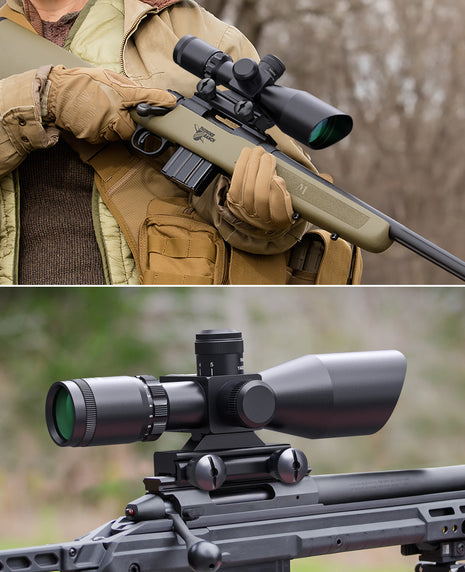The Benefits of Bipods
- 3 Tiempo mínimo de lectura

The usage of bipods is extremely wide and researches are still carried on to maximize their uses and benefits and properly fit in in today’s growing world.
The usage of bipods is extremely wide and researches are still carried on to maximize their uses and benefits and properly fit in in today’s growing world. Firstly used by photographers, different bipods designs have been juxtaposed to give more than stability and accuracy to shooters, being their primary functions. The advantages of bipods are several over the tripods besides the fact that they are relatively lighter and locomotion are made easy.
Large rifles do not depend on leg adhesion to be balanced to give accurate shots: that is the number of legs is irrelevant instead they rely on frictional forces to traverse the ground or be shifted fast from one position to the other. The bipod legs can be shifted fast compared to the tripods in case of chase or need for position adjustment. Appropriate design of bipod legs gives the shooter the advantage to advance fast even on unlevelled grounds, thereby allows him to keep track of moving objects in seconds.

In contrast to the tripod, two legged bipod locomotion is not affected by aerodynamics. Each side legs move in synchrony with the other which is another advantage. Based on that, the bipod moves faster than the tripod with less energy dissipated. Bipods use two power strokes per walking cycle making them dynamically stable. The bipod legs need less effort to stabilize them on the ground unlike the tripod. Bipods give the shooter accurate target on downwards slope. The shooter just needs take leverage on the slope and take a shot as he bothers less on the legs stability. Bipods locomotion is faster on a leveled ground because they generate one additional power stroke per leg motion cycle. Bipods have less adhesion to the ground and less frictional dynamically inclined forces that promote movement in any angle.

Bipods benefits are several and can be gotten from any of these: the carbon fiber thumb release bipod with legs which can extend up to 6 feet and collapse to 43 inches and weigh 1.86 kg. The quick lever bipod with thumb release legs weighs 1.90 kg available in flo yellow and flo orange, it also consists of a detachable pole sold separately. The mini bipod uses the same design concept as the popular 5217-04 bipod, which collapses up to 25 inches and extends to 35 inches; additionally, the leg clip is included (5217-30) available in yellow, flo yellow and flow orange. It weighs 1.60kg.
Surveyors can make use of the Crain thumb release bipod by setting a free standing GNSS antenna pole or prism pole. It can take 1-1.25 OD poles attached easily through the open clamp. The legs independently extend to 6 feet and collapse to 43 inches and weighs 1.93 kg. It is very suitable for surveyors and civil engineers. More so it is portable with adjustable legs. Bipods need be kept in cool and dry places for durability and maximum efficacy. The need for bipods in everyday activity is now paramount as makers try to meet the large demand of users worldwide.
Tags
- Compartir en:
- Deel
- Tweet
- Póngale un alfiler.
- Messenger
- Correo electrónico
You May Also Like
Blogs & News
-

, por C V How to Zero an AR-15 Scope with a BDC Reticle
-

, por C V What Makes Motion Awake Red Dot Sights Unique
-

, por C V Best Motion Awake 2 MOA Red Dot for AR-15 Home Security
-

, por C V LPVO vs. Holographic Sight for AR-15 Home Defense

















